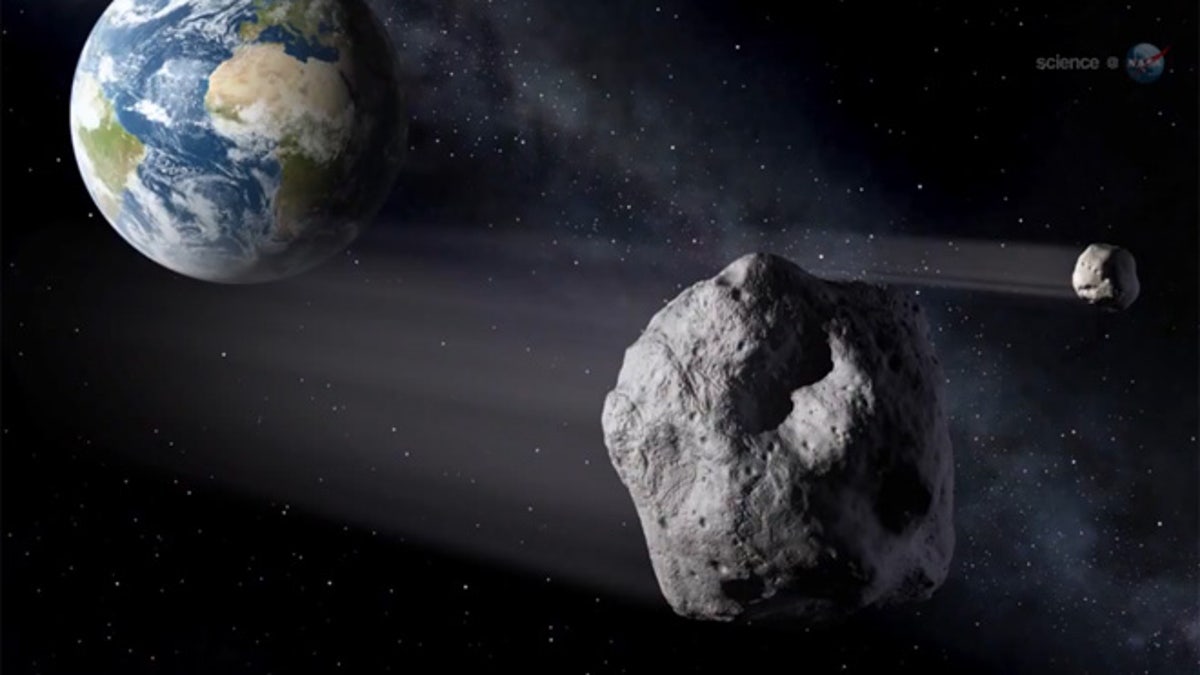
Talk about a close shave. Asteroid 2012DA14 will fly past Earth closer than many man-made satellites. (NASA)
An asteroid passed by Earth Sunday night but, thanks to a new asteroid-spotting system, it didn't catch astronomers off guard. The space rock was discovered a few days ago by NASA's new computer program, Scout, which sifted through telescope data to identify the Near Earth Object and run a quick calculation to determine that it would pass at a safe distance of 310,000 miles from the planet.
"The NASA surveys are finding something like at least five asteroids every night," Jet Propulsion Laboratory (JPL) astronomer Paul Chodas told NPR.
"When a telescope first finds a moving object, all you know is it's just a dot, moving on the sky," he added. "You have no information about how far away it is. "The more telescopes you get pointed at an object, the more data you get, and the more you're sure you are how big it is and which way it's headed. But sometimes you don't have a lot of time to make those observations."
Scout is still in its testing phase but, by analyzing data from the Panoramic Survey Telescope & Rapid Response System in Hawaii, it was able to identify the asteroid on the night of October 25-26, according to NPR. Scout's analysis determined that the asteroid would pass safely by Earth. Three more telescopes confirmed the finding.
More From Digital Trends
Related: Astronomers spot asteroid just two days before it comes within 25K miles of Earth
Although Scout is primarily focused on locating small objects -- last night's asteroid was somewhere between 16 feet and 82 feet in diameter -- it's older relative, Sentry, is tasked with identifying asteroids that pose more serious threats to Earth, like the potential to destroy entire cities. Chodas told NPR Sentry has probably identified 25-30 percent of asteroids over 460 feet wide, with a goal of identifying 90 percent. They're a while off from that goal, but that hunt may be a bit easier when the Large Synoptic Survey Telescope in Chile comes online in the early 2020s.




















